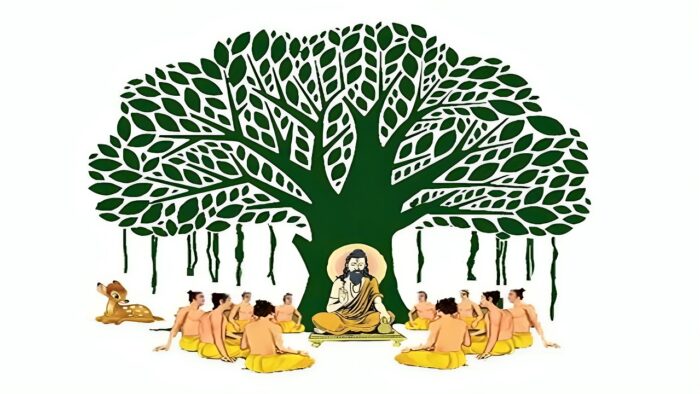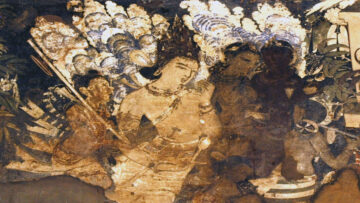Production and systematization of knowledge is as old as human civilization. Indian civilization has been home to numerous scientific and technological discoveries throughout its history. It can be argued that one of the earliest attempts at a rational study of our surroundings and nature was done in the Indian subcontinent. However, that knowledge today is either lost or misunderstood. According to the National Mission for Manuscripts, India is the largest repository of manuscripts in the world. It took the Government of India almost 70 years to realize the need for their proper preservation and documentation. In addition to this, India still hasn’t been able to write a comprehensive history of sciences for itself.
Indic knowledge systems have always attracted foreign scholars and the earliest attempts at recording history of Indian sciences were made by the orientalists. These were isolated writings on specific disciplines and didn’t have similar historiographical basis. Therefore, though extensive in their writings, the orientalists were never able to produce a systematic study of history of Indian sciences. The next phase came with scholars such as PC Ray (A History of Hindu Chemistry), B N Seal (The Positive Sciences of the Ancient Hindus), B Datta (The Scope and Development of Hindu Ganitha, the Algebra of Narayana) and A N Singh (On the use of Science in Hindu Mathematics) etc. This phase appeared in the background of efforts for institutionalization of scientific research in India. Also, this phase coincided with the freedom struggle and the nationalist strain is found in these writings. These scholars wanted to show the presence of proto-sciences in the Indian subcontinent and to enquire the inability of these knowledge systems to grow further.1 Lastly they desired to establish continuity of Indian sciences with the modern sciences. This was done to enable legitimization and acceptance of modern sciences in India.2 Regrettably, even this scholarship wasn’t able to facilitate a serious effort among Indian scholars to define and set the parameters for the study of history of Indian sciences.
The need for serious scholarship first found voice during a symposium, organized by United Nations Educational, Scientific and Cultural Organization (UNESCO) and the Indian National Science Academy (INSA), in November 1951. There were repeated attempts during the coming decades, in 1965 National Commission for the compilation of History of Science was constituted and in 1974, Indian Association for History and Philosophy of Science was founded. Both organizations were not able to clearly define what history of sciences for India meant and soon the enthusiasm waned. INSA started the journal, the Indian Journal of the History of Science (IJHS) in 1966 but it failed to provide the necessary methodological base for the study of sciences in non-Western cultures. Historians of that time focused more on writing socio-economic histories and history of sciences was relegated to the side-lines. This was also a time when presentist and Whig historiography in history of sciences was most popular throughout the world.
Joseph Needham through his exemplar work on Chinese sciences, ‘Science and Civilization’ was offering a new window to the problem of history of sciences. Needham challenged the Eurocentric model of history of sciences by proposing a new historiographic tradition. Needham believed in the universality of science and demanded a more ecumenical and inclusive history of sciences. He viewed China as the civilizational other of Europe and followed an approach where he departed from the European way of investigating the history of knowledge systems. He didn’t grant central importance to the scientific revolution of Europe in history of sciences, as he felt it to be utterly unfair to other cultures which were at par or above Europe in terms of knowledge creation.3 While emphasizing cross cultural transmission and exchange, Needham used the metaphor of several streams joining into the river of knowledge. Perhaps the most appealing historiographic principle of Needham’s scheme was the idea that the history of science of a region was integrated with its social, environmental, and economic history.4 Within no time, Needham’s approach gained currency in the scholarly circles and his work became a model for similar projects in other non-Western cultures, including India.
Social history of science in India was greatly influenced by the Needhamian project. Though the official endeavors to setup the historiographic base fell flat, some works outside the ambit of INSA are worth mentioning. Debiprasad Chattopadhyaya (Science and Society in Ancient India), Abdur Rahman (Science and Technology in Medieval India), both drew inspiration from and even mounted questions to the Needhamian assertions. Apart from a few other works, the general trend in the scholarship was that of a dichotomy of externalist-internalist history. The historiographic schema was insipid. Most writings were limited to the sciences of ancient India, and they were devoid of any novelty.
Floris Cohen has given a few reasons as to why, ‘there is as yet no historiographical tradition worth mentioning’ in India. He gives four possible reasons. One is the absence of trained scholars who could correctly understand the sources of Indic knowledge. The second is the dearth of historical material for such an effort and the third is the doubtful chronology of Indian history. Lastly, Indian civilization has been viewed as more inclined to the metaphysical than towards sciences.5 Many scholars have challenged Cohen’s propositions, but it is important to consider some of his points.
The absence of courses on history and philosophy of science at undergraduate and postgraduate levels both in science and social science faculties ensures that there is always shortage of trained scholars. Few teachers seem to echo Goethe’s famous statement that ‘the history of science is the science itself’.6 Students of science usually have a very limited knowledge of the history of their disciplines. Modern science stripped off the stories of inspiration and excitement has become too unimaginative and lifeless. Similarly, in social sciences division from sciences has resulted in having too much stress on the subjectivities. The need of the hour is an inter-disciplinary course for students of science and social sciences. In science students, it will create an understanding of the society and its driving forces. In social science students, it will enlarge their vision and create a scientific temper in their minds. Such a study will deal with heritage, glory and defeats, young minds can learn from past successes and failures.
India’s history of science can be studied in a different context compared to other civilizations and cultures. A simple borrowing of Needhamian framework would not be fruitful. A vital assumption, which is endemic to the concept of science as a cultural universal, is that similar social processes across civilizations would produce similar effects on growth of sciences. In the post modern world of today, idea of science as cultural universal has become anachronistic. The concept of universality and unity of sciences is under attack. Epistemological variations in different civilizations and their role in creating a pluralist science is the question that needs further scrutiny. The rigid understanding of linear progression of science flowing outwards from Europe has to be challenged. We should move towards an inclusive narrative of the development of sciences and assimilate the contributions of various civilizations.
To sum up the argument for comprehensive study and research in history of sciences, I would quote Martin Forrester, Director, Indian Institute of Science (1922-33) as concluding remarks. In his published lecture, ‘History of Science as related to Civilization’, he stated “If half the attention of schools, colleges and mature citizens that has been given to Alexander [the Great], [Julius] Caesar and Napoleon [Bonaparte] had been devoted to [Michael] Faraday, [Louis] Pasteur, the world be a different and a better world today”.7 I would add a few lines to his statement, “If due recognition is given to non-Western scientists such as Charaka, Brahamgupta, etc. then the science would be a different and a better science”.
Acknowledgements:
I am grateful to the University Grants Commission, New Delhi for the award of Junior Research Fellowship. Also, to the Maharshi Dayanand University, Rohtak for providing the facilities for my research work.
References:
- Ray, P.C., Essays and Discourses, G.A. Natesan & Co., Madras, 1918
- Raina, Dhruv and S. Irfan Habib, The Missing Picture: The Non-emergence of a Needhamian History of Sciences of India. In Situating the History of Science: Dialogues with Joseph Needham, Oxford University Press, New Delhi, 1999
- Needham, Joseph, The Historian of Science as Ecumenical Man: A Meditation in the Shingon Temple of Kongosammai-in on Koyasan. In Chinese Science: Exploration of an Ancient Tradition (eds. Nakayama, Shigeru and Sivin, Nathan), MIT Press, 1973
- Raina, Dhruv and S. Irfan Habib, The Missing Picture: The Non-emergence of a Needhamian History of Sciences of India. In Situating the History of Science: Dialogues with Joseph Needham, Oxford University Press, New Delhi, 1999
- Cohen, Floris, The Scientific Revolution: A Historiographical Inquiry, The University of Chicago Press, Chicago, 1994
- Balaram, P., Current Science, 1998, 75, 1285
- Forster, M., Current Science, 1933, 2, 86-91
Feature Image Credit: pinterest.com
Disclaimer: The opinions expressed in this article belong to the author. Indic Today is neither responsible nor liable for the accuracy, completeness, suitability, or validity of any information in the article.








